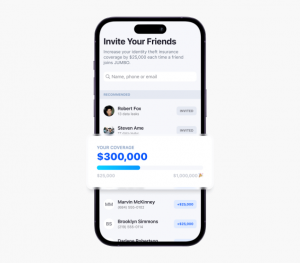The process of securing ad sponsorships and converting consumers is not what it used to be. Gone are the days when brands would rely solely on publicly available demographic data like age, gender, and estimated household income in an attempt to bucket consumers into simple – yet at the time sufficient – personas like “moms” and “teens.”

As Internet usage grew, brands were offered a much more immediate and individualistic view of consumers, ushering in a new advertising model that traded in stereotypical blanket personas for targeting using cookies and third-party data purchased from data brokers, without clear permission from consumers. Once a useful, yet underhanded strategy, the surge of mobile devices, cookie-blocking web browsers, and social media networks means that third-party data no longer paints accurate portraits of consumers.
With modern consumers connecting with friends, sharing opinions, and making purchases across websites, social networks, and mobile apps, people’s real identities have become seamlessly intertwined with their virtual lives. Trillions of consumer data points are created about relationships, interests, locations, and favorite products (Business Insider). This level of available data hardly calls for the need to sneakily track arbitrary behaviors across the web.
As consumers, we are no longer willing to weed through irrelevant marketing messaging and ignore poor user experiences — we demand relevance. In fact, according to a recent Gigya survey, after receiving irrelevant information from a brand, 43% of respondents ignored all future communications, and 20% of respondents stopped buying products from the company altogether. For brands and advertisers, the key to creating relevance in today’s Big Data landscape is harnessing the power of customer identity data.

By appropriately encouraging users to self-identify across websites and mobile apps, using either traditional registration or social authentication, brands can gain valuable, first-party insights about consumers and create direct relationships with their customers. This rich, permission-based identity data can then be used to build accurate profiles, and develop advertising strategies that are relevant, lucrative, and respectful of consumer privacy.
Let’s take a look at two brands that have gained a much clearer understanding of their customers, and are using identity-driven insights to maximize advertising performance and revenue.
The Canadian Olympic Committee
To drum up awareness and engagement for the XXII Winter Olympic Games and beyond, the Canadian Olympic Committee realized that it needed to adopt an identity-driven marketing approach to reach consumers with relevance and drive acquisition while maintaining cost-efficiencies.
To get an accurate view of Olympic fans, the Canadian Olympic Committee allows users to verify their identities via social authentication. By logging in socially to the Winter Olympic Games community platform and the Canadian Olympic Team site, fans provide permission-based access to specific demographic and psychographic information housed within their social profiles.

After analyzing fans’ permission-based data, the Canadian Olympic Committee discovered that users logging in via Facebook to the Winter Olympic Games community platform shared similar demographic profiles, as well as interests in Canadian hockey teams, TV shows like The Big Bang Theory, and certain gaming apps. These types of insights were used to build custom and lookalike audience segments to reach users with similar profiles who are most likely to convert across Facebook and Twitter via promoted campaigns.
Leveraging these insights, the Canadian Olympic Committee was able to simultaneously boost user registrations from Facebook promotions by 106%, while decreasing CPCs by 51% during the Winter Olympic Games. In the future, the Canadian Olympic Committee could also leverage this identity data to increase ad revenue by more accurately targeting Olympic sponsor placements based on specific consumer interests, actions, and behaviors.
Medialaan
To combat growing competition from media streaming providers, Medialaan sought to add value for its advertising sponsors and increase rate cards on its premier network site, VTM.be.
Medialaan decided to gate long-form video content behind a registration wall. Viewers have the option to identify themselves using a traditional username and password or their existing Facebook accounts. The captured identity data, as well as behavioral data created as registered viewers take on-site actions across devices, is consolidated and directly exported into Medialaan’s existing marketing applications for use across channels and campaigns.

With a comprehensive understanding of viewers’ identities, Medialaan is able to provide sponsors with detailed insights into its user base to more accurately reach and convert desired segments. This level of audience intelligence is expected to result in a 15% revenue increase across Medialaan’s web properties.
In addition, giving users an easy way to identify themselves and consume content across devices has significantly improved acquisition and retention, with 200% more registrations than expected and 30% of daily site visitors logging in.
The days of employing the “spray and pray” method of marketing and advertising are far behind us — and that’s a good thing, for both consumers and businesses. With the technologies and strategies available to marketers and advertisers today, understanding audiences based on identity data and reaching consumers with relevance across platforms while respecting their privacy has never been more possible.

The Canadian Olympic Committee and Medialaan are just two examples of innovative brands using first-party, permission-based identity data to amplify their advertising initiatives. To learn more about how businesses can drive ad revenue with customer identity data, download our free eBook, “From Mad Men to Mad Scientists: 5 Ways to Fuel Ad Revenue with Consumer Data.”
(293)









